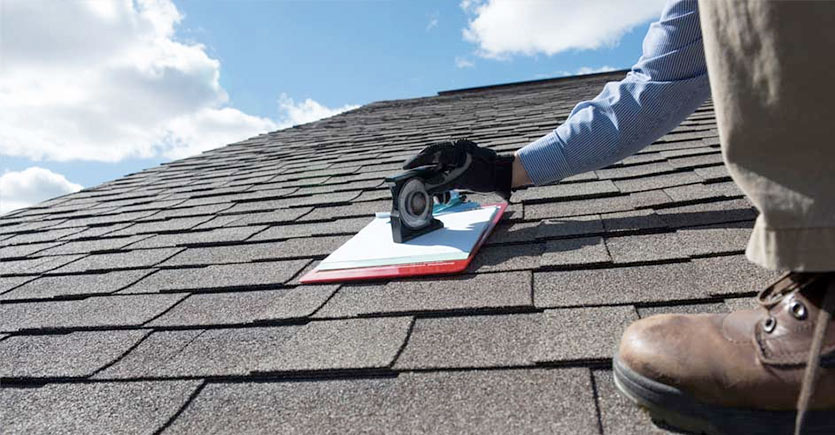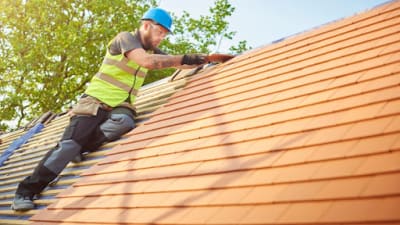Just How to Review Different Roof Alternatives for Your Building Needs
Evaluating roof alternatives for your building needs a comprehensive technique that thinks about various elements such as the meant usage of the framework, local climate conditions, and product features. It is necessary to consider the benefits and disadvantages of different roof covering types, from asphalt roof shingles to steel and clay ceramic tiles, while likewise considering initial expenses and lasting maintenance. In addition, recognizing energy efficiency and visual appeal can influence your choice. As you consider these considerations, one inquiry continues to be: which aspects will eventually lead your option for a sustainable and aesthetically pleasing roof covering remedy?
Assessing Your Building's Requirements
To effectively evaluate roof alternatives, begin by extensively analyzing your structure's demands. Start by thinking about the structure's intended usage, as different frameworks might require differing roof covering requirements. For instance, domestic roof coverings often focus on aesthetic appeals and insulation, while business structures may focus on sturdiness and load-bearing capacity.
Following, assess the neighborhood environment problems that will certainly impact roofing performance. Elements such as temperature changes, rainfall degrees, and wind patterns can influence material option and layout. A roof that excels in a pleasant climate might not execute too in locations prone to heavy snowfall or severe heat.
Additionally, evaluate the architectural integrity of your structure. Guarantee that the existing framework can sustain the chosen roof covering products, specifically if considering larger choices. It is additionally vital to evaluate any type of local building regulations or policies that might dictate details demands for roof covering systems.

Comparing Roofing Products
As soon as a thorough analysis of your building's needs has actually been completed, the following action involves comparing different roof products. Each material offers distinctive advantages and disadvantages, making it important to straighten your selection with your certain requirements and situations.
Asphalt tiles are extensively recognized for their price and convenience of installation, making them a popular option for domestic structures. On the other hand, metal roofing, recognized for its durability and long life, can withstand rough climate condition yet may feature a higher initial investment.
Clay and concrete floor tiles give outstanding thermal insulation and visual appeal, particularly for Mediterranean-style architecture, yet they call for an even more robust structural assistance as a result of their weight. Timber trembles deal a natural appearance and good insulation homes however may demand extra upkeep and are prone to fire threats.
Examining Cost and Budget Plan
Evaluating your roof options requires a mindful examination of expense and spending plan considerations. The total budget for a roofing job consists of numerous elements, consisting of material prices, labor expenses, upkeep, and prospective long-lasting cost savings. It is important to develop a clear budget plan prior to exploring particular roofing materials, as helpful hints this will certainly assist the decision-making process and aid you avoid overspending.
Begin by getting quotes from multiple contractors to understand labor prices in your region. Ensure that these price quotes include all essential services, such as removal of the old roofing system, setup, and any kind of extra attributes, like insulation or air flow enhancements - Toledo Roofer. Next off, analyze the expense of various roof materials, considering both preliminary installation expenses and anticipated life-span

Comprehending Energy Effectiveness
Power performance plays a vital duty in the option of roofing materials and systems, substantially impacting both energy usage and general convenience within a building. An appropriate roof can boost thermal efficiency, reducing the requirement for home heating and cooling systems, which consequently reduces energy bills and reduces ecological impact.
When reviewing roof covering choices, take into consideration products that reflect instead than soak up heat. Furthermore, correct insulation and air flow are essential to enhance the power performance of the entire roofing Roofing Contractor system.
Another essential aspect is the roofing system's longevity and maintenance requirements. Sturdy materials that require much less constant substitute add to lasting power financial savings. Furthermore, the energy performance of a roof can additionally be assessed with its conformity with well established sustainability scores such as ENERGY CELEBRITY or LEED.
Considering Visual Allure
A roof covering's visual charm substantially influences the general look of a structure, complementing its building style and boosting visual allure. Roofing Contractor. When examining roofing alternatives, it is important to consider just how the selected product, color, and design will balance with the existing structure and neighborhood. A properly designed roof can raise even the most basic of buildings, transforming them into visual centerpieces
Various roof materials supply different visual qualities. For instance, typical tiles may evoke a timeless beauty, while steel roofing can give a modern-day, smooth appearance. Additionally, the shade of the roof covering product plays a vital role; lighter shades can make a structure appear even more sizable, while darker tones may produce a cozier atmosphere.
In addition, building components, such as dormers and eaves, can enhance the roof covering's aesthetic influence. It is recommended to seek advice from professional designers or designers to make sure the selected roof option aligns with the general layout intent. Ultimately, a roofing system should not only supply practical benefits but additionally contribute favorably to the you can look here structure's visual, mirroring the owner's taste and the character of the surrounding setting.
Conclusion
